- Home
- Isaac Asimov
Foundation's Edge f-6 Page 8
Foundation's Edge f-6 Read online
Page 8
“You mean, we won’t know when we are off the planet and out in space?”
“It’s exactly what I mean, because even as I speak to you, we have taken off. We will be cutting through the upper atmosphere in a very few minutes and within half an hour we will be in outer space.”
3.
Pelorat seemed to shrink a little as he stared at Trevize. His long rectangle of a face grew so blank that, without showing any emotion at all, it radiated a vast uneasiness.
Then his eyes shifted right—left.
Trevize remembered how he had felt on his own first trip beyond the atmosphere.
He said, in as matter-of-fact a manner as he could, “Janov,” (it was the first time he had addressed the professor familiarly, but in this case experience was addressing inexperience and it was necessary to seem the older of the two) “we are perfectly safe here. We are in the metal womb of a warship of the Foundation Navy. We are not fully armed, but there is no place in the Galaxy where the name of the Foundation will not protect us. Even if some ship went mad and attacked, we could move out of its reach in a moment. And I assure you I have discovered that I can handle the ship perfectly.”
Pelorat said, “It is the thought, Go—Golan, of nothingness—”
“Why, there’s nothingness all about Terminus. There’s just a thin layer of very tenuous air between ourselves on the surface and the nothingness just above. All we’re doing is to go past that inconsequential layer.”
“It may be inconsequential, but we breathe it.”
“We breathe here, too. The air on this ship is cleaner and purer, and will indefinitely remain cleaner and purer than the natural atmosphere of Terminus.”
“And the meteorites?”
“What about meteorites?”
“The atmosphere protects us from meteorites. Radiation, too, for that matter.”
Trevize said, “Humanity has been traveling through space for twenty millennia, I believe—”
“Twenty-two. If we go by the Hallblockian chronology, it is quite plain that, counting the—”
“Enough! Have you heard of meteorite accidents or of radiation deaths? —I mean, recently? —I mean, in the case of Foundation ships?”
“I have not really followed the news in such matters, but I am a historian, my boy, and—”
“Historically, yes, there have been such things, but technology improves. There isn’t a meteorite large enough to damage us that can possibly approach us before we take the necessary evasive action. Four meteorites—coming at us simultaneously from the four directions drawn from the vertices of a tetrahedron—might conceivably pin us down, but calculate the chances of that and you’ll find that you’ll die of old age a trillion trillion times over before you will have a fifty-fifty chance of observing so interesting a phenomenon.”
“You mean, if you were at the computer?”
“No,” said Trevize in scorn. “If I were running the computer on the basis of my own senses and responses, we would be hit before I ever knew what was happening. It is the computer itself that is at work, responding millions of times faster than you or I could.” He held out his hand abruptly. “Janov, come let me show you what the computer can do, and let me show you what space is like.”
Pelorat stared, goggling a bit. Then he laughed briefly. “I’m not sure I wish to know, Golan.”
“Of course you’re not sure, Janov, because you don’t know what it is that is waiting there to be known. Chance it! Come! Into my room!”
Trevize held the other’s hand, half leading him, half drawing him. He said, as he sat down at the computer, “Have you ever seen the Galaxy, Janov? Have you ever looked at it?”
Pelorat said, “You mean in the sky?”
“Yes, certainly. Where else?”
“I’ve seen it. Everyone has seen it. If one looks up, one sees it.”
“Have you ever stared at it on a dark, clear night, when the Diamonds are below the horizon?”
The “Diamonds” referred to those few stars that were luminous enough and close enough to shine with moderate brightness in the night sky of Terminus. They were a small group that spanned a width of no more than twenty degrees, and for large parts of the night they were all below the horizon. Aside from the group, there was a scattering of dim stars just barely visible to the unaided eye. There was nothing more but the faint milkiness of the Galaxy—the view one might expect when one dwelt on a world like Terminus which was at the extreme edge of the outermost spiral of the Galaxy.
“I suppose so, but why stare? It’s a common sight.”
“Of course it’s a common sight,” said Trevize. “That’s why no one sees it. Why see it if you can always see it? But now you’ll see it, and not from Terminus, where the mist and the clouds are forever interfering. You’ll see it as you’d never see it from Terminus—no matter how you stared, and no matter how clear and dark the night. How I wish I had never been in space before, so that—like you—I could see the Galaxy in its bare beauty for the first time.”
He pushed a chair in Pelorat’s direction. “Sit there, Janov. This may take a little time. I have to continue to grow accustomed to the computer. From what I’ve already felt, I know the viewing is holographic, so we won’t need a screen of any sort. It makes direct contact with my brain, but I think I can have it produce an objective image that you will see, too. —Put out the light, will you? —No, that’s foolish of me. I’ll have the computer do it. Stay where you are.”
Trevize made contact with the computer, holding hands warmly and intimately.
The light dimmed, then went out completely, and in the darkness, Pelorat stirred.
Trevize said, “Don’t get nervous, Janov. I may have a little trouble trying to control the computer, but I’ll start easy and you’ll have to be patient with me. Do you see it? The crescent?”
It hung in the darkness before them. A little dim and wavering at first, but getting sharper and brighter.
Pelorat’s voice sounded awed. “Is that Terminus? Are we that far from it?”
“Yes, the ship’s moving quickly.”
The ship was curving into the night shadow of Terminus, which appeared as a thick crescent of bright light. Trevize had a momentary urge to send the ship in a wide arc that would carry them over the daylit side of the planet to show it in all its beauty, but he held back.
Pelorat might find novelty in this, but the beauty would be tame. There were too many photographs, too many maps, too many globes. Every child knew what Terminus looked like. A water planet—more so than most—rich in water and poor in minerals, good in agriculture and poor in heavy industry, but the best in the Galaxy in high technology and in miniaturization.
If he could have the computer use microwaves and translate it into a visible model, they would see every one of Terminus’s ten thousand inhabited islands, together with the only one of them large enough to be considered a continent, the one that bore Terminus City and—
Turn away!
It was just a thought, an exercise of the will, but the view shifted at once. The lighted crescent moved off toward the borders of vision and rolled off the edge. The darkness of starless space filled his eyes.
Pelorat cleared his throat. “I wish you would bring back Terminus, my boy. I feel as though I’ve been blinded.” There was a tightness in his voice.
“You’re not blind. Look!”
Into the field of vision came a filmy fog of pale translucence. It spread and became brighter, until the whole room seemed to glow.
Shrink!
Another exercise of will and the Galaxy drew off, as though seen through a diminishing telescope that was steadily growing more powerful in its ability to diminish. The Galaxy contracted and became a structure of varying luminosity.
Brighten!
It grew more luminous without changing size, and because the stellar system to which Terminus belonged was above the Galactic plane, the Galaxy was not seen exactly edge-on. It was a strongly fore-shortened d
ouble spiral, with curving dark-nebula rifts streaking the glowing edge of the Terminus side. The creamy haze of the nucleus—far off and shrunken by the distance—looked unimportant.
Pelorat said in an awed whisper, “You are right. I have never seen it like this. I never dreamed it had so much detail.”
“How could you? You can’t see the outer half when Terminus’s atmosphere is between you and it. You can hardly see the nucleus from Terminus’s surface.”
“What a pity we’re seeing it so nearly head-on.”
“We don’t have to. The computer can show it in any orientation. I just have to express the wish—and not even aloud.”
Shift co-ordinates!
This exercise of will was by no means a precise command. Yet as the image of Galaxy began to undergo a slow change, his mind guided the computer and had it do what he wished.
Slowly the Galaxy was turning so that it could be seen at right angles to the Galactic plane. It spread out like a gigantic, glowing whirlpool, with curves of darkness, and knots of brightness, and a central all-but-featureless blaze.
Pelorat asked, “How can the computer see it from a position in space that must be more than fifty thousand parsecs from this place?” Then he added, in a choked whisper, “Please forgive me that I ask. I know nothing about all this.”
Trevize said, “I know almost as little about this computer as you do. Even a simple computer, however, can adjust co-ordinates and show the Galaxy in any position, starting with what it can sense in the natural position, the one, that is, that would appear from the computer’s local position in space. Of course, it makes use only of the information it can sense to begin with, so when it changes to the broadside view we would find gaps and blurs in what it would show. In this case, though—”
“Yes?”
“We have an excellent view. I suspect that the computer is outfitted with a complete map of the Galaxy and can therefore view it from any angle with equal ease.”
“How do you mean, a complete map?”
“The spatial co-ordinates of every star in it must be in the computer’s memory banks.”
“Every star?” Pelorat seemed awed.
“Well, perhaps not all three hundred billion. It would include the stars shining down on populated planets, certainly, and probably every star of spectral class K and brighter. That means about seventy-five billion, at least.”
“Every star of a populated system?”
“I wouldn’t want to be pinned down; perhaps not all. There were, after all, twenty-five million inhabited systems in the time of Hari Seldon—which sounds like a lot but is only one star out of every twelve thousand. And then, in the five centuries since Seldon, the general breakup of the Empire didn’t prevent further colonization. I should think it would have encouraged it. There are still plenty of habitable planets to expand into, so there may be thirty million now. It’s possible that not all the new ones are in the Foundation’s records.”
“But the old ones? Surely they must all be there without exception.”
“I imagine so. I can’t guarantee it, of course, but I would be surprised if any long-established inhabited system were missing from the records. Let me show you something—if my ability to control the computer will go far enough.”
Trevize’s hands stiffened a bit with the effort and they seemed to sink further into the clasp of the computer. That might not have been necessary; he might only have had to think quietly and casually: Terminus!
He did think that and there was, in response, a sparkling red diamond at the very edge of the whirlpool.
“There’s our sun,” he said with excitement. “That’s the star that Terminus circles.”
“Ah,” said Pelorat with a low, tremulous sigh.
A bright yellow dot of light sprang into life in a rich cluster of stars deep in the heart of the Galaxy but well to one side of the central haze. It was rather closer to the Terminus edge of the Galaxy than to the other side.
“And that,” said Trevize, “is Trantor’s sun.”
Another sigh, then Pelorat said, “Are you sure? They always speak of Trantor as being located in the center of the Galaxy.”
“It is, in a way. It’s as close to the center as a planet can get and still be habitable. It’s closer than any other major populated system. The actual center of the Galaxy consists of a black hole with a mass of nearly a million stars, so that the center is a violent place. As far as we know, there is no life in the actual center and maybe there just can’t be any life there. Trantor is in the innermost subring of the spiral arms and, believe me, if you could see its night sky, you would think it was in the center of the Galaxy. It’s surrounded by an extremely rich clustering of stars.”
“Have you been on Trantor, Golan?” asked Pelorat in clear envy.
“Actually no, but I’ve seen holographic representations of its sky.”
Trevize stared at the Galaxy somberly. In the great search for the Second Foundation during the time of the Mule, how everyone had played with Galactic maps—and how many volumes had been written and filmed on the subject.
And all because Hari Seldon had said, at the beginning, that the Second Foundation would be established “at the other end of the Galaxy,” calling the place “Star’s End.”
At the other end of the Galaxy! Even as Trevize thought it, a thin blue line sprang into view, stretching from Terminus, through the Galaxy’s central black hole, to the other end. Trevize nearly jumped. He had not directly ordered the line, but he had thought of it quite clearly and that had been enough for the computer.
But, of course, the straight-line route to the opposite side of the Galaxy was not necessarily an indication of the “other end” that Seldon had spoken of. It was Arkady Darell (if one could believe her autobiography) who had made use of the phrase “a circle has no end” to indicate what everyone now accepted as truth—
And though Trevize suddenly tried to suppress the thought, the computer was too quick for him. The blue line vanished and was replaced with a circle that neatly rimmed the Galaxy in blue and that passed through the deep red dot of Terminus’s sun.
A circle has no end, and if the circle began at Terminus, then if we searched for the other end, it would merely return to Terminus, and there the Second Foundation had indeed been found, inhabiting the same world as the First.
But if, in reality, it had not been found—if the so-called finding of the Second Foundation had been an illusion—what then? What beside a straight line and a circle would make sense in this connection?
Pelorat said, “Are you creating illusions? Why is there a blue circle?”
“I was just testing my controls. —Would you like to locate Earth?”
There was silence for a moment or two, then Pelorat said, “Are you joking?”
“No. I’ll try.”
He did. Nothing happened.
“Sorry,” said Trevize.
“It’s not there? No Earth?”
“I suppose I might have misthought my command, but that doesn’t seem likely. I suppose it’s more likely that Earth isn’t listed in the computer’s vitals.”
Pelorat said, “It may be listed under another name.”
Trevize jumped at that quickly, “What other name, Janov?”
Pelorat said nothing and, in the darkness, Trevize smiled. It occurred to him that things might just possibly be falling into place. Let it go for a while. Let it ripen. He deliberately changed the subject and said, “I wonder if we can manipulate time.”
“Time! How can we do that?”
“The Galaxy is rotating. It takes nearly half a billion years for Terminus to move about the grand circumference of the Galaxy once. Stars that are closer to the center complete the journey much more quickly, of course. The motion of each star, relative to the central black hole, might be recorded in the computer and, if so, it may be possible to have the computer multiply each motion by millions of times and make the rotational effect visible. I can try to have it
done.”
He did and he could not help his muscles tightening with the effort of will he was exerting—as though he were taking hold of the Galaxy and accelerating it, twisting it, forcing it to spin against terrible resistance.
The Galaxy was moving. Slowly, mightily, it was twisting in the direction that should be working to tighten the spiral arms.
Time was passing incredibly rapidly as they watched—a false, artificial time—and, as it did so, stars became evanescent things.
Some of the larger ones—here and there—reddened and grew brighter as they expanded into red giants. And then a star in the central clusters blew up soundlessly in a blinding blaze that, for a tiny fraction of a second, dimmed the Galaxy and then was gone. Then another in one of the spiral arms, then still another not very far away from it.
“Supernovas,” said Trevize a little shakily.
Was it possible that the computer could predict exactly which stars would explode and when? Or was it just using a simplified model that served to show the starry future in general terms, rather than precisely?
Pelorat said in a husky whisper, “The Galaxy looks like a living thing, crawling through space.”
“It does,” said Trevize, “but I’m growing tired. Unless I learn to do this less tensely, I’m not going to be able to play this kind of game for long.”
He let go. The Galaxy slowed, then halted, then tilted, until it was in the view-from-the-side from which they had seen it at the start.
Trevize closed his eyes and breathed deeply. He was aware of Terminus shrinking behind them, with the last perceptible wisps of atmosphere gone from their surroundings. He was aware of all the ships filling Terminus’s near-space.
It did not occur to him to check whether there was anything special about any one of those ships. Was there one that was gravitic like his own and matched his trajectory more closely than chance would allow?
5

 The Return of the Black Widowers
The Return of the Black Widowers The Stars, Like Dust
The Stars, Like Dust Foundation
Foundation David Starr Space Ranger
David Starr Space Ranger I, Robot
I, Robot Puzzles of the Black Widowers
Puzzles of the Black Widowers Casebook of the Black Widowers
Casebook of the Black Widowers The Ugly Little Boy
The Ugly Little Boy Azazel
Azazel Pebble in the Sky
Pebble in the Sky Foundation and Empire
Foundation and Empire The Complete Robot
The Complete Robot Fantastic Voyage
Fantastic Voyage Foundation and Earth
Foundation and Earth The Naked Sun
The Naked Sun The Currents of Space
The Currents of Space Foundation's Edge
Foundation's Edge The Robots of Dawn
The Robots of Dawn Nightfall
Nightfall The Caves of Steel
The Caves of Steel Prelude to Foundation
Prelude to Foundation Nemesis
Nemesis Robot Dreams
Robot Dreams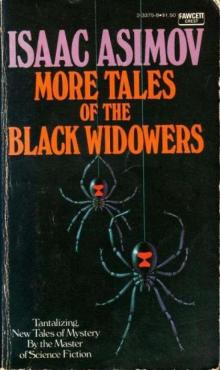 More Tales of the Black Widowers
More Tales of the Black Widowers The Complete Stories
The Complete Stories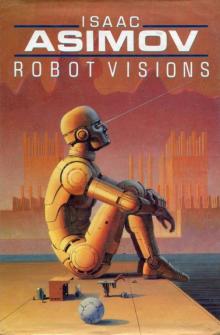 Robot Visions
Robot Visions Lucky Starr And The Moons of Jupiter
Lucky Starr And The Moons of Jupiter Lucky Starr and the Big Sun of Mercury
Lucky Starr and the Big Sun of Mercury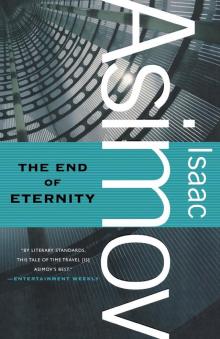 The End of Eternity
The End of Eternity The Bicentennial Man and Other Stories
The Bicentennial Man and Other Stories Lucky Starr And The Rings Of Saturn
Lucky Starr And The Rings Of Saturn Buy Jupiter and Other Stories
Buy Jupiter and Other Stories Forward the Foundation
Forward the Foundation Lucky Starr and the Oceans of Venus
Lucky Starr and the Oceans of Venus The Positronic Man
The Positronic Man The Portable Star
The Portable Star Asimovs Mysteries
Asimovs Mysteries Earth Is Room Enough
Earth Is Room Enough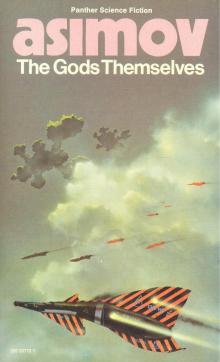 The Gods Themselves
The Gods Themselves Youth
Youth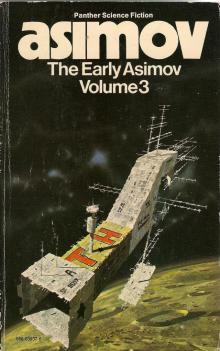 The Early Asimov Volume 3
The Early Asimov Volume 3 The Winds of Change and Other Stories
The Winds of Change and Other Stories Of Time, Space, and Other Things
Of Time, Space, and Other Things Nine Tomorrows
Nine Tomorrows Time Warps
Time Warps Robots and Empire
Robots and Empire Young Star Travelers
Young Star Travelers Fantastic Voyage II: Destination Brain
Fantastic Voyage II: Destination Brain Second Foundation
Second Foundation The Rest of the Robots
The Rest of the Robots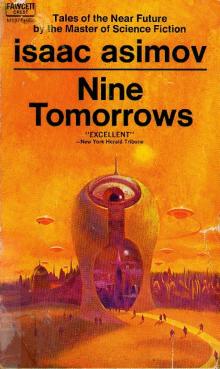 NINE TOMORROWS Tales of the Near Future
NINE TOMORROWS Tales of the Near Future Daneel Olivaw 1 - The Caves of Steel
Daneel Olivaw 1 - The Caves of Steel THE BICENTENNIAL MAN
THE BICENTENNIAL MAN David Starr Space Ranger (lucky starr)
David Starr Space Ranger (lucky starr)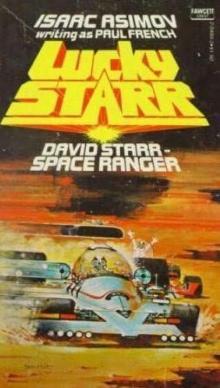 David Starr Space Ranger (ls)
David Starr Space Ranger (ls) Lucky Starr And The Big Sun Of Mercury ls-4
Lucky Starr And The Big Sun Of Mercury ls-4 Pebble In The Sky te-1
Pebble In The Sky te-1 Asimov’s Future History Volume 9
Asimov’s Future History Volume 9 Gold: The Final Science Fiction Collection
Gold: The Final Science Fiction Collection Foundation and Earth f-7
Foundation and Earth f-7 Asimov's New Guide to Science
Asimov's New Guide to Science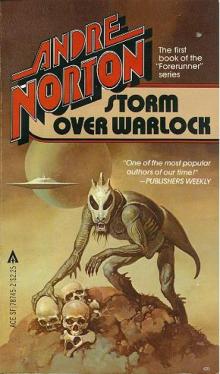 STORM OVER WARLOCK
STORM OVER WARLOCK Stars, Like Dust
Stars, Like Dust Norby The Mixed-Up Robot
Norby The Mixed-Up Robot Found!
Found! Asimov’s Future History Volume 11
Asimov’s Future History Volume 11 Second Foundation f-5
Second Foundation f-5 Asimov’s Future History Volume 15
Asimov’s Future History Volume 15 The Early Asimov. Volume 1
The Early Asimov. Volume 1 Secound Foundation
Secound Foundation Daneel Olivaw 3 - The Robots of Dawn
Daneel Olivaw 3 - The Robots of Dawn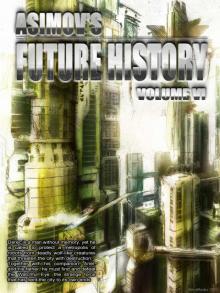 Asimov’s Future History Volume 6
Asimov’s Future History Volume 6 The Early Asimov. Volume 2
The Early Asimov. Volume 2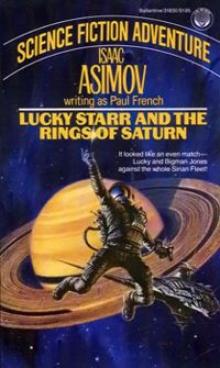 Lucky Starr And The Rings Of Saturn ls-6
Lucky Starr And The Rings Of Saturn ls-6 100 Malicious Little Mysteries
100 Malicious Little Mysteries Forward the Foundation f-2
Forward the Foundation f-2 I.Asimov: A Memoir
I.Asimov: A Memoir Foundation's Edge f-6
Foundation's Edge f-6 Lucky Starr and the Pirates of the Asteroids ls-2
Lucky Starr and the Pirates of the Asteroids ls-2 Robot City 1 & 2
Robot City 1 & 2 The Fourth Science Fiction Megapack
The Fourth Science Fiction Megapack Asimov’s Future History Volume 16
Asimov’s Future History Volume 16 The Dim Rumble
The Dim Rumble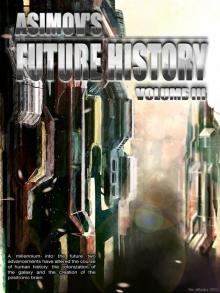 Asimov's Future History Volume 3
Asimov's Future History Volume 3 The Currents Of Space te-3
The Currents Of Space te-3 Asimov’s Guide To Shakespear. Volume 1
Asimov’s Guide To Shakespear. Volume 1 Asimov’s Future History Volume 13
Asimov’s Future History Volume 13 Asimov’s Future History Volume 12
Asimov’s Future History Volume 12 The Secret Sense
The Secret Sense Of Time and Space and Other Things
Of Time and Space and Other Things Norby tnc-2
Norby tnc-2 Norby The Mixed-Up Robot tnc-1
Norby The Mixed-Up Robot tnc-1 Misbegotten Missionary
Misbegotten Missionary Asimov’s Future History Volume 19
Asimov’s Future History Volume 19 Fantastic Voyage II: Destination Brain fv-2
Fantastic Voyage II: Destination Brain fv-2 Asimov’s Future History Volume 10
Asimov’s Future History Volume 10 Asimov's Future History Volume 2
Asimov's Future History Volume 2 Feeling of Power
Feeling of Power In the Beginning
In the Beginning The Caves of Steel trs-1
The Caves of Steel trs-1 Asimov's Future History Vol 2
Asimov's Future History Vol 2 Caliban c-1
Caliban c-1 The Gentle Vultures
The Gentle Vultures Utopia c-3
Utopia c-3 Prelude to Foundation f-1
Prelude to Foundation f-1 Short Stories Vol.1
Short Stories Vol.1 Asimov’s Future History Volume 8
Asimov’s Future History Volume 8 Daneel Olivaw 4 - Robots and Empire
Daneel Olivaw 4 - Robots and Empire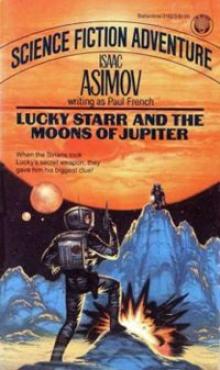 Lucky Starr The And The Moons of Jupiter ls-5
Lucky Starr The And The Moons of Jupiter ls-5 Gold
Gold Asimov’s Future History Volume 4
Asimov’s Future History Volume 4 Foundation and Empire f-4
Foundation and Empire f-4 Potential
Potential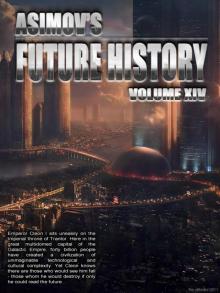 Asimov’s Future History Volume 14
Asimov’s Future History Volume 14 Asimov’s Future History Volume 7
Asimov’s Future History Volume 7 Daneel Olivaw 2 - The Naked Sun
Daneel Olivaw 2 - The Naked Sun Lucky Starr and the Pirates of the Asteroids
Lucky Starr and the Pirates of the Asteroids Foundation f-3
Foundation f-3 All the Troubles of the World
All the Troubles of the World Cleon the Emperor
Cleon the Emperor Asimov's Future History Volume 5
Asimov's Future History Volume 5 Asimov’s Future History Volume 20
Asimov’s Future History Volume 20 Robots and Empire trs-4
Robots and Empire trs-4 Profession
Profession It's Been a Good Life
It's Been a Good Life The Robots of Dawn trs-3
The Robots of Dawn trs-3 Lucky Starr And The Oceanf Of Venus ls-3
Lucky Starr And The Oceanf Of Venus ls-3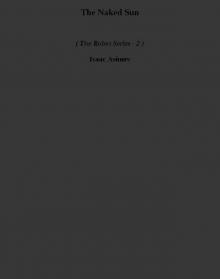 The Naked Sun trs-2
The Naked Sun trs-2 Asimov's Future History Volume 1
Asimov's Future History Volume 1